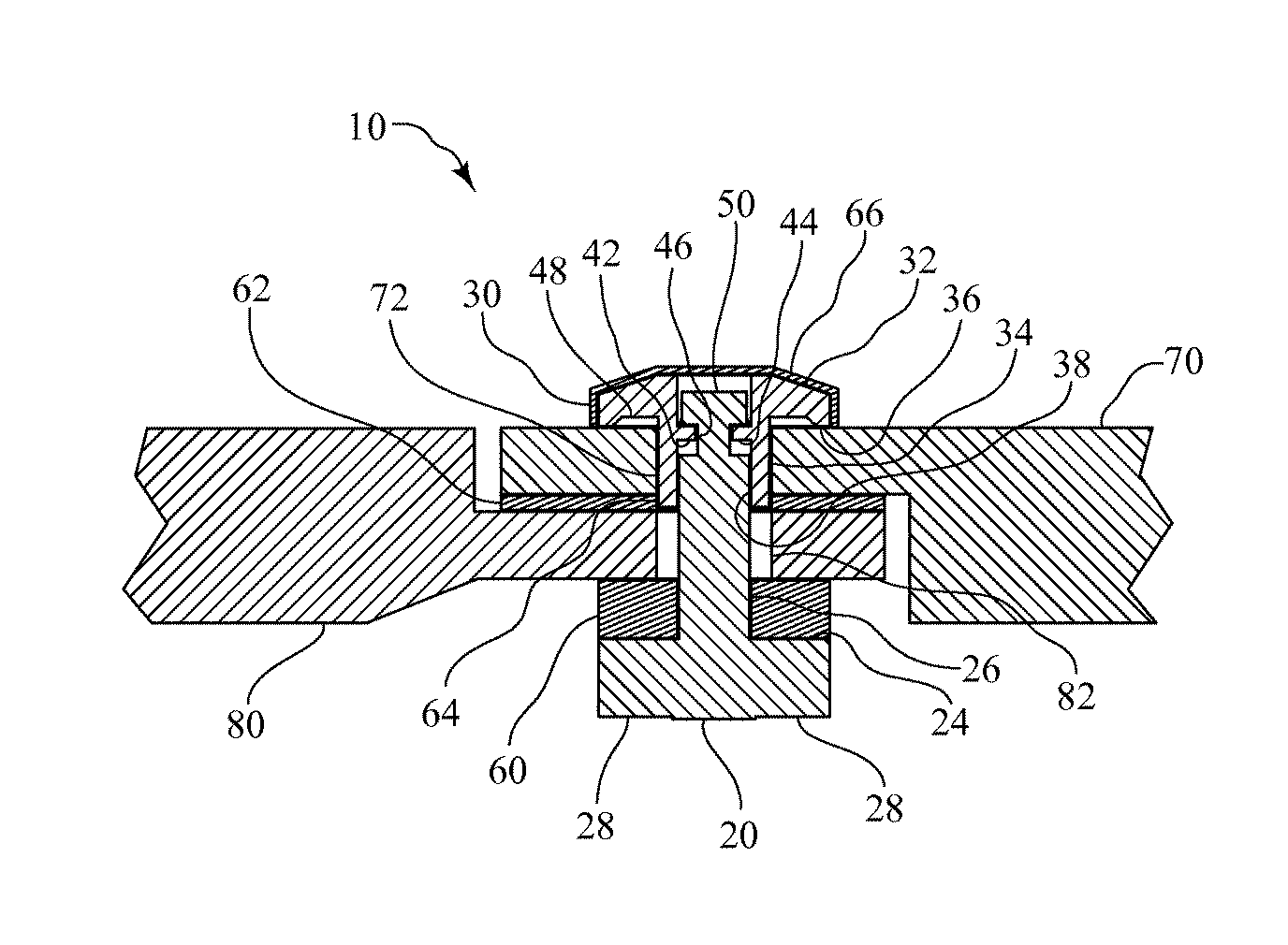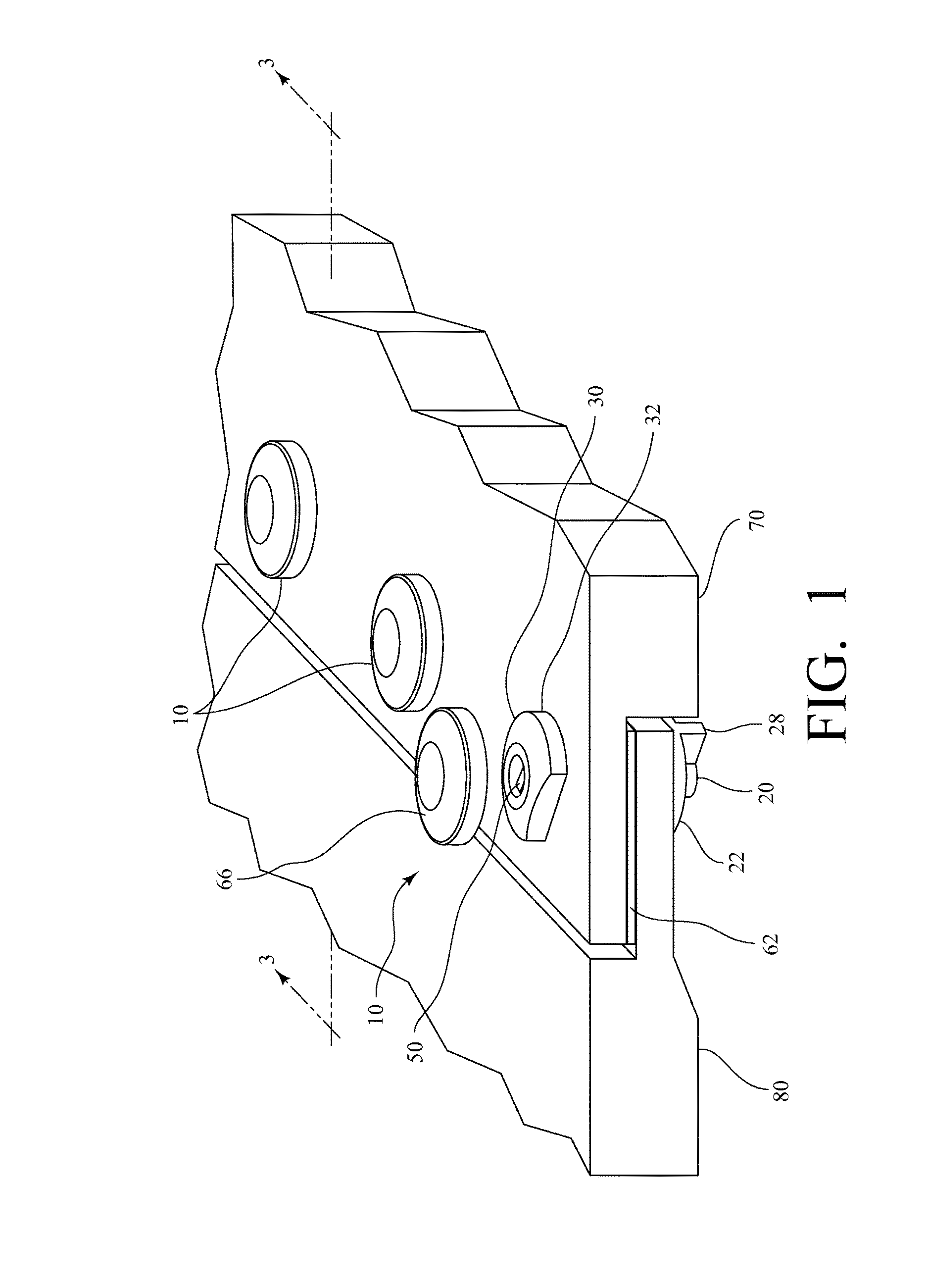Fastener assembly
a technology of fasteners and assembly parts, which is applied in the direction of fastening means, pins, screws, etc., can solve the problems of requiring extensive 100 man-hours for fastener installation alone in a typical 55-foot diameter radome, and the risk of loosening of nut-and-bolt fasteners, so as to achieve quick and reliable connection
- Summary
- Abstract
- Description
- Claims
- Application Information
AI Technical Summary
Benefits of technology
Problems solved by technology
Method used
Image
Examples
Embodiment Construction
[0027]The present invention is a fastener assembly that has particular applicability and utility in the installation of radome panels.
[0028]As shown in FIGS. 1-6, an exemplary fastener assembly 10 made in accordance with the present invention comprises a fastener pin 20, an insert 30, and a compression member 60. In some embodiments, the fastener assembly 10 may also include a panel gasket 62 and a cap 66, as further described below.
[0029]Referring now to FIG. 8, in this exemplary embodiment, the fastener pin 20 is comprised of a base 22, a shaft 26 that extends from a top surface 24 of the base 22, and two wings 28 that extend from a lower surface of the base 22, as further described below. The shaft 26 of the fastener pin 20 terminates in a tee portion 50, the function of which will also be described below.
[0030]With respect to FIG. 8, the shaft 26 is described as including a tee portion 50 because there are two lateral extensions (or wings) at or near a distal end of the shaft 26...
PUM
 Login to View More
Login to View More Abstract
Description
Claims
Application Information
 Login to View More
Login to View More - R&D
- Intellectual Property
- Life Sciences
- Materials
- Tech Scout
- Unparalleled Data Quality
- Higher Quality Content
- 60% Fewer Hallucinations
Browse by: Latest US Patents, China's latest patents, Technical Efficacy Thesaurus, Application Domain, Technology Topic, Popular Technical Reports.
© 2025 PatSnap. All rights reserved.Legal|Privacy policy|Modern Slavery Act Transparency Statement|Sitemap|About US| Contact US: help@patsnap.com



